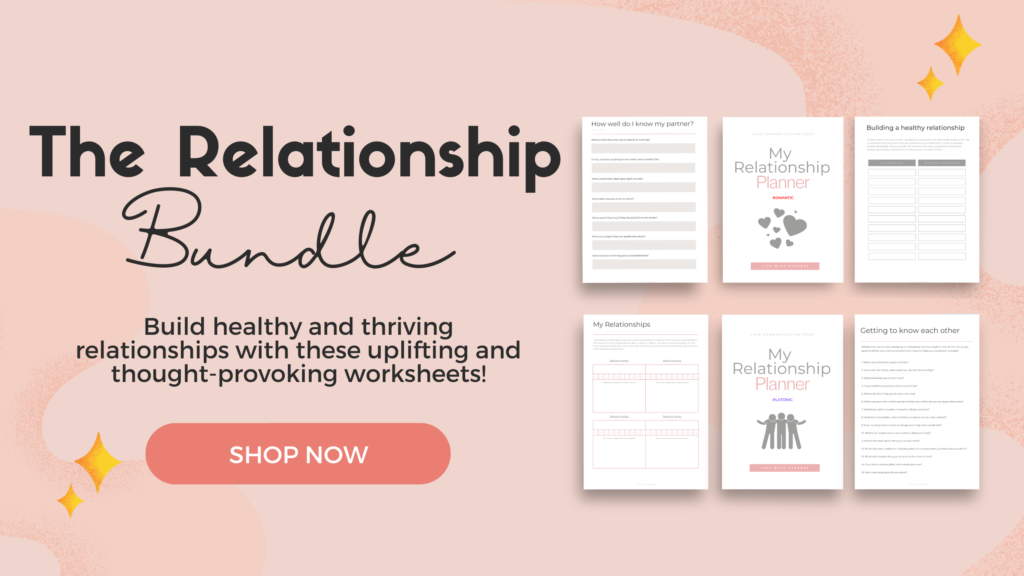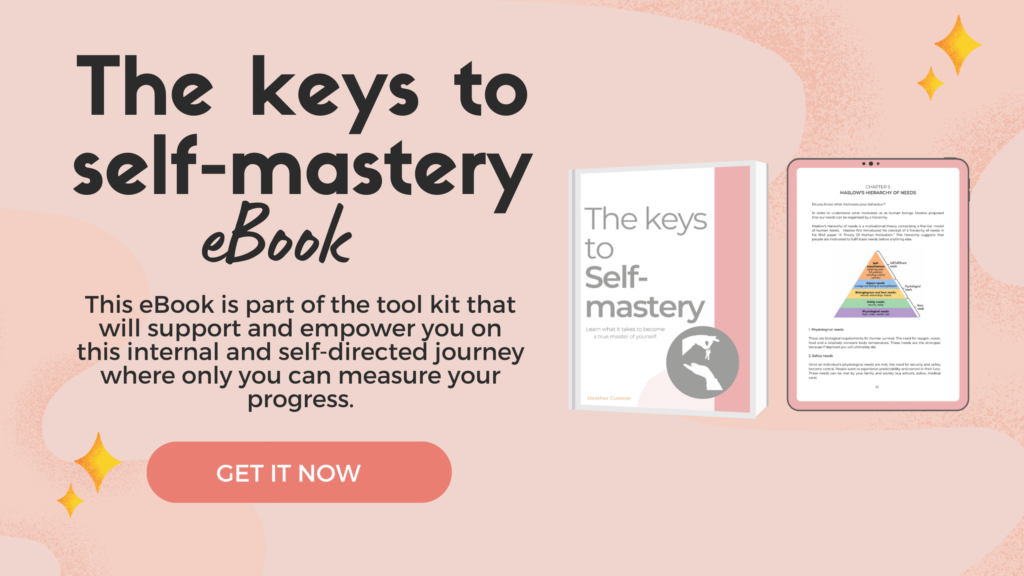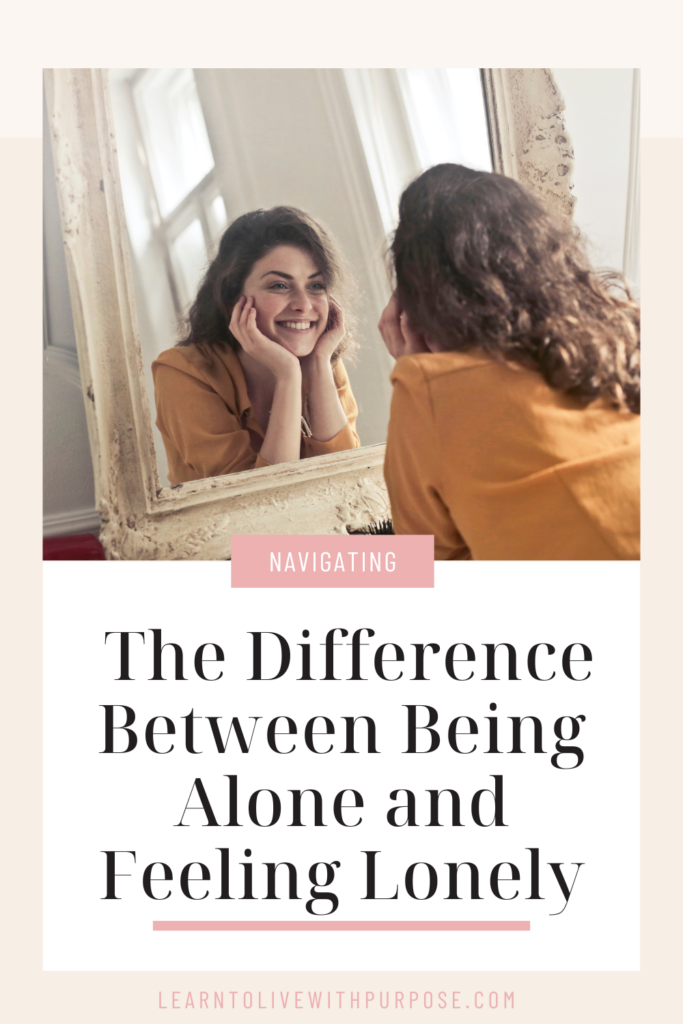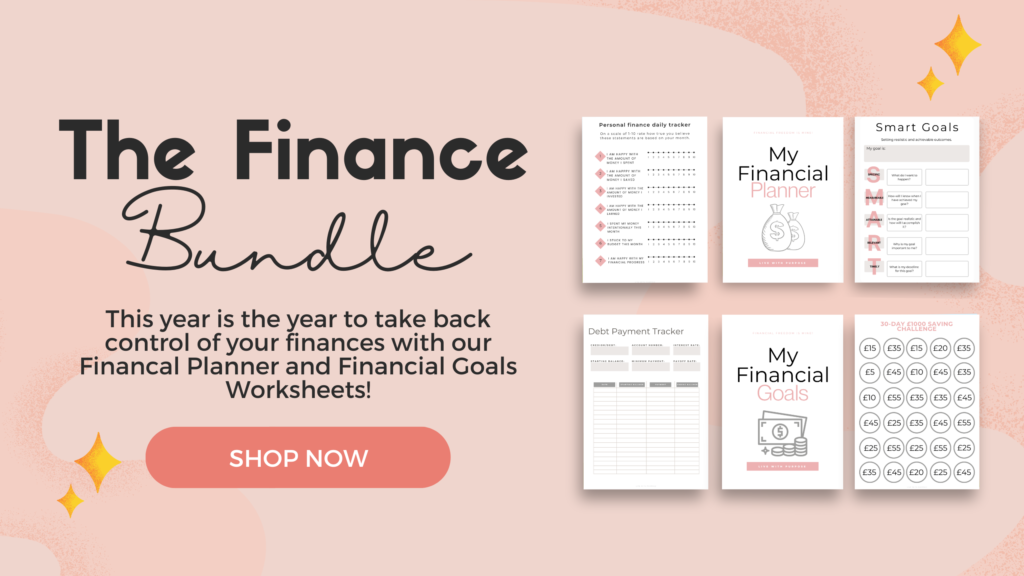
In a world that often emphasises the value of social connections, there’s an important distinction to be made between being alone and feeling lonely.
Many people associate solitude with a sense of isolation or sadness, but the truth is that being alone can be a fulfilling and rejuvenating experience. 😊
In this blog post, I will explore the nuances of being alone versus feeling lonely, understanding the importance of solitude, and embracing the positive aspects of both states.
Let’s get to it. 💕
The Difference Between Being Alone and Feeling Lonely:
Being Alone:
Being alone is a state of physical solitude, where you find yourself without the company of others. It can occur by choice or as a natural consequence of circumstances. Spending time alone provides an opportunity for self-reflection, relaxation, and personal growth.
It allows you to engage in activities that bring you joy, pursue hobbies, or simply enjoy a moment of peace. Being alone can be a deliberate choice, a time to recharge and connect with oneself. 🥰
Feeling Lonely:
Loneliness, on the other hand, is an emotional state that arises from a perceived lack of meaningful connections. It’s possible to feel lonely even in a crowded room if the connections are superficial or unfulfilling.
Loneliness is often characterised by a sense of emptiness, isolation, or a longing for deeper human connections. It’s a complex emotional experience that can impact mental and physical well-being. 😟

Embracing the Positive Aspects of Being Alone:
1. Self-Discovery:
Being alone provides an opportunity for self-discovery. It allows you to explore your thoughts, feelings, and interests without external influences. Use this time to reflect on your goals, values, and aspirations. Self-discovery is a crucial aspect of personal growth and can lead to a deeper understanding of oneself.
2. Independence:
Embracing solitude fosters independence. When you’re comfortable being alone, you become more self-reliant and less reliant on others for your happiness. This independence can empower you to make decisions based on your own needs and preferences, leading to a more authentic and fulfilling life. 🥰
3. Creativity:
Solitude often sparks creativity. When you’re alone with your thoughts, you have the mental space to generate new ideas, think critically, and engage in creative pursuits (yaay). Many artists, writers, and innovators find inspiration in moments of solitude, leading to the creation of meaningful and impactful work. 🎨
4. Rest and Rejuvenation:
Being alone allows for rest and rejuvenation. In a world filled with constant stimuli, taking time for solitude can be a form of self-care. It provides an opportunity to relax, recharge, and focus on activities that bring you peace and joy, contributing to overall well-being.

Addressing the Challenges of Feeling Lonely:
1. Cultivating Meaningful Connections:
If loneliness arises from a lack of meaningful connections, focus on cultivating relationships that nourish your soul. Seek out individuals who share your values and interests. Join clubs, organisations, or communities where you can meet like-minded people. Focus on getting yourself out there. Quality connections are often more fulfilling than a large social circle. 🫂
2. Volunteering and Giving Back:
Engaging in volunteer work or contributing to your community can alleviate feelings of loneliness. By helping others, you not only make a positive impact on the world but also connect with individuals who share a common purpose. Volunteering provides a sense of belonging and fulfillment.
3. Seeking Professional Support:
If loneliness becomes a persistent and overwhelming emotion, maybe consider seeking professional support. A therapist or counselor can provide guidance and a safe space to explore the root causes of loneliness. Addressing these issues with professional help can lead to a more fulfilling and connected life. 🫶
Finding Balance:
The key to a fulfilling life lies in finding a balance between being alone and fostering meaningful connections. Embrace solitude as a time for self-discovery, creativity, and rejuvenation. At the same time, actively cultivate relationships that bring joy and fulfillment. Recognise that both states are essential for a well-rounded and satisfying life. 💕
Conclusion
Being alone and feeling lonely are two distinct experiences, each with its own set of opportunities and challenges. Embracing solitude allows for self-discovery, independence, creativity, and rest. However, if loneliness creeps in, it’s crucial to address it by cultivating meaningful connections, volunteering, or seeking professional support. You are not alone. ❤️
Understanding the nuances between being alone and feeling lonely empowers you to navigate both states with intention and purpose. Ultimately, finding a balance between solitude and social connections contributes to a rich and fulfilling life. Embrace the positive aspects of being alone, foster meaningful connections, and savor the journey of self-discovery in this beautiful dance between solitude and companionship.
Pin this post for a reminder 📌 👇

Related Blogs
Things to Say “No” to for you to Live a Happier Life
How to Stop Settling For Less Than You Deserve
How to Become the Best Version of Yourself: A Guide For 20-Somethings
People on a budget know that cost-cutting is essential to staying financially stable. It’s easy to let expenses creep up year after year, especially after a pay rise, but learning how to spend less and save money can go a long way. 😃
With tight household budgets becoming the new normal, affordable ways to trim expenses are more important than ever.
This guide will help you understand why it’s so important to spend less and save money, give you ideas for cutting costs in your everyday life, and offer strategies for keeping costs down indefinitely. ⬇️
Money can be a tricky topic. For many of us, finances are a sensitive subject that we’re not always comfortable discussing. But being honest and forthcoming about your money situation is the first step in becoming a savvy budgeter.
Managing your finances responsibly doesn’t have to be difficult, but it does take some planning and self-discipline. These tips will help you begin budgeting so that you have more money at the end of the month, rather than less!
What is the problem?
As we mentioned above, if you’re constantly worried about spending too much money, then you might be experiencing what we call “money anxiety.” Money anxiety is when you are so worried about spending money that it actually interferes with your daily life. Which will 100% cause you to worry about the future. 😔
It might make you afraid of making mistakes with your finances. It might even cause you to have physical symptoms, like trouble sleeping or increased anxiety.
Money anxiety can stem from a variety of different reasons. Maybe you grew up in a home where finances were an issue, or maybe you had a traumatic financial experience like filing for bankruptcy or getting a large bill you weren’t expecting. 😬
Whatever the cause, money anxiety can feel scary and overwhelming. It can keep you from making purchases you really want, and it can make saving money seem virtually impossible.

Knowing where your money goes
The first step to saving more money is knowing where your money currently goes. That way, you’ll be able to see where you might be able to cut back without feeling like you’re missing out on anything.
To start, make a list of all your current expenses. Try to include everything, even if you’re not sure if you can cut it. Once you have your expenses listed, decide which ones are non-negotiable and which ones are negotiable. 📝
For example, if you have a £300 car payment, that might be a non-negotiable expense. You need a car to get to work, so you can’t just stop driving.
However, if you eat out for lunch every day, that might be a negotiable expense. You don’t need to eat out every day, so you can start bringing your lunch to work. 🍲
QUIZ: What Does Success Mean To You? Take The Quiz Here!
Why is it so hard to save?
So, you’ve figured out where all your money currently goes. Now, why is it so hard to save any of it?
Well, that depends on you. Here are a few common reasons people have a hard time saving money:
👉You have an unhealthy relationship with money.
If you don’t think saving is important, or if you’re ashamed of having little or no savings, then you’ll have a really hard time saving.
If this sounds like you, try reading this article to learn more about why saving is so important.
👉You’re in denial about your spending.
If you’re not keeping track of your spending, you’re totally in denial about how much you’re really spending.
If you’re not being honest with yourself about how much money is leaving your bank account, you’ll never be able to save any money. Get a notebook/excel spreadsheet and track your spending for a few weeks to see where your money is actually going.
👉You spend too much on non-negotiable expenses.
If you’re spending all your money on non-negotiable expenses like rent or car payments, then you won’t have any money left over to put into savings or investments. Start by finding ways to cut back on expenses like eating out or buying new clothes or getting your car washed.
👉You have too many short-term goals.
If you have a bunch of short-term goals (like wanting a new TV for your home or wanting to take a vacation), then you’ll have a hard time saving for long-term goals (like retirement or saving for a house).
If you have short-term goals that are important to you, but cost a lot of money, try cutting back on your expenses to save more.

Strategies to Help You Save More and Spend Less
Now that you know why you may be having a hard time to saving money, it’s time to make a plan to start saving.
I’ve put together a list of strategies that will help you save more and spend less so you can start building your savings as soon as possible.
👉 Get an extra side hustle.
Having an extra source of income can help you save more money because you’ll have more to put away towards your savings. You can also use your extra money to pay off any debt faster. Allowing you to pay off interest quicker!
👉 Track your spending for a month.
Once you have a better idea of where all your money is going, you can make better decisions about where to cut back.
👉 Teach yourself to delay gratification.
If you’re constantly buying things you don’t really need because you want them, you’re not saving money. Make a list of things you want, but don’t need, and learn to resist the urge to buy those things on a whim.
👉 Start small and make it a habit.
It’s easy to think, “I need to have £1 million pounds,” and then feel like you’ll never make that happen. Instead, start small, and make saving money a regular part of your life. Try not to bite off more than you can chew.
How to Save Money and Stop Overspending
Now that you know how to track your spending and save more, it’s time to put your plan into action.
💰 Set up a budget.
The first thing you need to do is set up a budget. You can use an app like Mint or You Need a Budget to track your spending and make sure you’re sticking to your budget. Or you can just use an Excel spreadsheet – Whatever is easiest for you.
💰 Negotiate your bills.
If you have a lot of high-interest debt, like credit card bills or a car loan, then you need to prioritise paying those off because they’re costing you a lot of your coins. The best way to do that is to negotiate lower payments with your creditors.
💰 Make sacrifices.
If you find yourself in a situation where you want to save more but you also want to keep doing the things important to you, then a sacrifice might be in order.
Maybe you stop eating out as often. Maybe you stop shopping for a few months. The important thing is that you make a change that helps you save more money and feel less stressed about it.

Stop Giving Away Your Hard-Earned Cash
When you sit down to really examine your finances and identify where you are spending your money, you will probably be surprised to find out that many of your expenses could be reduced. 🥲
For example, have you ever considered the fact that you might be giving away a lot of your hard-earned cash because you are not paying close attention to your insurance coverage?
If you feel like you are paying too much money for your insurance, you might want to sit down with a representative and see if there is anything you can do to lower your costs.
Similarly, many people also end up giving away their hard-earned cash because they are not shopping around for the best deals. For example, if you are a regular at your local coffee shop, you might want to stop in and ask if they offer a loyalty program.
If you look hard enough, there are always little ways to save some pounds or pennies. 👛
Spend Less and Save Money – The Bottom Line
The best time to start saving money is now! 💸
The sooner you start saving, the less you will have to worry about in the long run. Anything can happen at any time that can put you in a financial hole. Having money for a rainy day will never not be a good idea.
If you are having a hard time spending less and saving more, it may be time to consider hiring a financial advisor. 👨💼
Financial advisors can help you identify where you are spending too much money and help you find ways to cut back on your expenses without sacrificing things that are important to you.
Pin this post for a reminder 📌 👇

Related Blogs
How to Achieve Financial Freedom in Your 30’s
Financial freedom is a term that has been thrown around quite a bit. But what does it mean, and how do you achieve financial freedom in your 30s? 🤔
Financial freedom is the point at which you no longer have to work in order to meet your day-to-day expenses. Instead, you have a substantial amount of money set aside that could take care of these expenses and leave you with excess cash for other things.
Millennials are often portrayed as a generation that values experiences over possessions, collaboration over competition and social impact over personal wealth. 💰
However, while this may be true of many young people today, financial independence and security remain the primary goal for most millennials.
In fact, a recent survey found that members of the millennial generation actually value personal finance more than any other generation.
Even if you feel like you have neglected your finances up until this point, it’s not too late to get back on track. 😌
Here are five steps you can take to become financially independent and secure in your 30s.

Develop a solid financial foundation
Before you attempt to achieve financial freedom, it is important to lay a solid foundation for your finances.
Start by creating a budget that accounts for your monthly expenses. It is also important to track your expenses in order to get a better idea of where your money is going. What isn’t measured cannot be changed. 🤷♀️
Once you have a better understanding of your expenses, you can create a budget that helps you to save more and spend less.
Next, get a good grasp on your credit score. Your credit score will impact your financial future, so it is important to understand how it works and how you can improve it.
Additionally, it is also a good idea to have a savings account and an emergency savings fund that has enough money to cover at least six months of living expenses.
Make saving a priority
One of the easiest ways to boost your savings and put yourself on the path to financial freedom is to prioritize saving over spending. 🙂
Aim to build your savings account as soon as possible by putting aside a specific amount every month. If you are employed, you may also want to look into setting up an employer-sponsored retirement account such as a 401(k) or 403(b).
You can also open an IRA account, which is a self-directed account that offers a range of investment options you can choose based on your risk tolerance, time frame and investment goals. 🤑
Another way to boost your savings is to cut back on expenses, particularly discretionary expenses like dining out, entertainment and shopping. Start small by focusing on just one or two expenses, and then expand from there as your budget becomes more streamlined.
Finally, you can also increase your income by taking on some overtime or taking on a side hustle.

Automate Your Savings
*Carrying on from my point above* 😂
If you have made it a goal to save a certain amount of money each month, start automating the process.
Open up a retirement account and an investment account, and have a portion of your paycheck go directly into each account.
If you have debt, consider making extra payments towards that. Every little bit will help you get out of debt much quicker.
You can also open a savings account to start building up your emergency fund. If you have an overdraft or credit card debt, you will be able to breathe a lot easier once you have the money in the account.
Build good credit
Your credit score plays a big role in your financial future, so it is important to make sure it is in good standing.
Your credit score is an indicator of how much money you can borrow from lenders.
Having good credit can help you save money on interest rates when you take out a mortgage or car loan and can even help you to get a job in some cases. 💼
Take some time to understand how your credit score works and how you can improve it over time. 🕒

Don’t rely on your credit card
Credit cards often get a bad rap, but they can be a useful tool if used responsibly.
A credit card allows you to make a purchase now and pay it off over the next 30-60 days. In fact, credit cards are one of the most effective ways to build your credit. 💳
However, credit cards can also be dangerous for your financial health if not used responsibly. If you’re not careful, you can end up with an insurmountable amount of debt that’s difficult to pay off. 😬
Instead of using your credit card, consider getting a low-interest debit card or cash-back credit card to make purchases. If you use your credit card, make sure you pay it off completely each month to avoid interest. If you don’t, you could end up racking up a lot of debt.
Pay off your student loans ASAP
Student loan debt has become a burden for many members of the millennial generation. In fact, the average millennial with student loan debt has £28,000 in debt, which is higher than the average for similarly aged members of Generation X or the Baby Boomer generation. 🥲
Although student loan debt can be helpful in some situations, such as if you have a degree in a high-demand field, most students would benefit from a more affordable form of higher education. 🤷♀️
One way to reduce your student loan debt is to look into income-driven repayment plans. These plans base your monthly payment on your income and overall financial situation.
Depending on your situation, you may be able to get your loans forgiven after a certain amount of time. If you don’t have the money to pay off your student loans, you may want to explore your deferment and forbearance options.
Generally, you can defer or forbear your student loans if you are unable to make payments because of financial hardship. It’s definitely something to look into. 🤔

Build your assets
Growing your assets includes building your savings, paying off your debts and investing in assets that will grow over time. 🏠
You can build your assets by starting a side hustle, maxing out your 401(k) or 403(b) and investing in long-term investments like real estate. If you have money saved, you can also look into investing in assets like stocks or bonds.
If you don’t have a lot of money saved, you may want to focus on growing your assets by working on some side hustles or freelance gigs. This will allow you to put more money into your savings account and build your assets over time.
Keep in mind that growing your assets does not necessarily mean spending a significant amount of money. You can also build your assets by reducing your ongoing expenses. 💰
RELATED: What does success mean to you? Take the quiz here
Pay off high-interest debt
Although growing your assets is important, it’s also important to pay off high-interest debt, such as credit cards and student loans, as quickly as possible. 🏃♀️
This will not only help you to take care of these debts more quickly, but it will also save you money in the long run.
If you have high-interest debt, you may want to consider refinancing or consolidating your debt. This will allow you to refinance your existing debts at a lower interest rate, which will save you money in the long run. 💸
If you have credit card debt, you might also want to consider making a payment extra each month. This will let you pay off your debt more quickly and will also save you money in the long run.
Debt is a trap that will keep you from achieving financial freedom. If you can’t pay it off all at once, at least commit to making a monthly payment.
You will get a feel for how good it feels to be free of debt. You may find that you have more money each month to put towards savings and investments.
If you have a mortgage, don’t worry. As long as you are able to make your monthly payments, you will achieve financial freedom eventually. ❤️
Make sure you have enough life insurance
Life insurance is often a forgotten part of financial planning, but it is an important part of protecting your loved ones after your death.
The right amount of life insurance will vary based on your age, your family situation and your financial situation. 😊
In general, you want enough life insurance to make sure your loved ones are provided for after your death.
It is also important to ensure your life insurance policy is adequate enough to cover the financial obligations that depend on you.
Establish an emergency fund
With a healthy emergency fund, you can prepare for unplanned expenses like car repairs or medical bills. Establish an emergency fund that is large enough to cover at least three to six months of living expenses.
An emergency fund is an important part of any financial plan. It will let you sleep easy at night knowing that you will have the funds to take care of any unexpected costs that come up. 🏥
If you are ever between jobs, have medical issues, your car breaks down or experience any other financial emergency, this fund will be there to help you out and you’ll be glad you have that safety net. 🙃
The fund can be kept in a savings account so that it is easy to access in case of an emergency where you need to have access to your money straight away. You don’t have to put it in stocks or bonds to get a good return.
A big reason why people don’t save is that they have expenses. But if you have expenses, you have assets, too. What are those assets? They are your monthly living costs.
When you’re young, it’s easy to overlook these costs, but as you get older, you will realize just how important it is to save up 3-6 months of living costs. This is the ultimate financial freedom hack. 👈
Having 3-6 months of living costs in an emergency fund will also give you the flexibility to make those big purchases.
Whether you want to start a business, travel, or buy a house, having this fund will give you the freedom to take the risks you need without the added pressure of debt.

Invest in Yourself
It’s never too early to start planning for your retirement. But when you’re in your 30s, you have another goal to think about: investing in yourself.
This is the time when you can really set yourself apart from the crowd. Learn a new skill. Start a side hustle. Travel to new places. Do anything that you want to do in the early stages of your life. 😅
Education is a great investment. If you have the ability to attend school full-time, you can finish a degree/boot camp or a course and have a significant boost to your earning potential in a short amount of time. 💵
Commit to a Health Habit
Health habits are crucial to financial health. Taking care of yourself now will help you stay healthy and drive down your future healthcare costs. 🧑⚕️
Find a healthy habit you like and commit to it. You can even partner with a friend or family member to help keep yourself accountable.
Improve your diet, get more exercise, or start meditating. Your future self will thank you. 🧘♀️
RELATED: Ready to live a healthier life? Check out our Health Bundle here

Network and Ask for Help
As you get older, you will find that you have more in common with people than when you were younger. You will make connections at work, school, clubs, community events, and even online. 💻
This is the perfect opportunity to network and start asking for help. If you have financial goals you’re trying to meet, consider asking a fellow coworker for advice. If you have a friend who is a financial expert, have them mentor you.
You’re never too far away from someone who can help you advance in your personal and professional life. 🙂
Conclusion
The quarter-life crisis is a real thing and it can hit you at any time. Even in your 30s. If you’re in your early 30s and still struggling to get your financial life together, you might be wondering if there’s hope for you.
But don’t worry! You still have a few good years left before hitting retirement age. With the right attitude, determination, and discipline, anyone can achieve financial freedom in their 30s. 💕
Even if you feel like you have neglected your finances up until this point, it’s not too late to get back on track. In fact, becoming financially secure sooner rather than later will provide you with a sense of peace and independence that will last the rest of your life. 😌
Pin this post for a reminder 📌 👇

Related Blogs
The Top 10 Ways to Stop Living From Paycheck to Paycheck
Did you know that people on my email list sometimes get exclusive discounts on my products? Join the community and save yourself some coins!
Freshly-squeezed inspiration, and no-nonsense tips + tricks to improve your life delivered to your inbox weekly.
Subscribe to my newsletter
Subscribe
You're all signed up!
Be sure to whitelist our email address so that all the goodies make it to your inbox.

